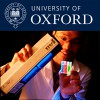|
6 |
Creative Commons |
Lab, Camera, Action: Tides |
The Bay of St Brieuc in Brittany has one of the largest tides on Earth. Dr Andrew Steele takes some time out of his holiday, on the day of the highest tide of the year, to find out why. |
Andrew Steele |
03 Feb 2014 |
|
5 |
Creative Commons |
Lab, Camera, Action: Transit of Venus |
In June of 2012, one of the rarest predictable astronomical phenomena took place: Venus passed directly in front of the Sun, as seen from Earth. For more information, visit transitofvenus.org. |
Andrew Steele |
03 Feb 2014 |
|
4 |
Creative Commons |
Lab, Camera, Action: Maglev Train |
Wheels are so last century. We’ve got a train set which doesn’t have any; it just floats around the track in a billowing cloud of steam. Dr Andrew Steele explains how our superconducting magnetic levitation—or maglev—train really works. |
Andrew Steele |
03 Feb 2014 |
|
3 |
Creative Commons |
Lab, Camera, Action: Particle Accelerator |
Dr Andrew Steele takes a look inside the ISIS particle accelerator in Oxfordshire, where scientists use neutrons to investigate the structure of materials, and accelerator physicist Dr Suzie Sheehy explains how this massive machine works. |
Andrew Steele, Suzie Sheehy |
03 Feb 2014 |
|
2 |
Creative Commons |
Lab, Camera, Action: Make your own CD spectrometer |
How do we know what the stars are made of when we've never been to one? Dr Andrew Steele shows us how to make a spectrometer, a device used by scientists to analyse light, using a cereal box and a CD. |
Andrew Steele |
03 Feb 2014 |
|
1 |
Creative Commons |
The Accelerate! Show |
Get up close and personal with the exciting world of particle and accelerator physics. Learn how particle accelerators can do everything from recreating conditions just after the Big Bang to finding new ways to treat cancer. |
Andrew Steele, Suzie Sheehy |
03 Feb 2012 |


